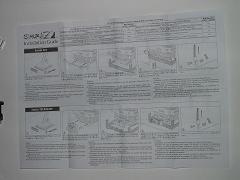 |
|
|
|
In the Forums... |

Installation
Having handled many coolers over the years I see people often forgetting just how important the aspect of CPU cooler installation is. The latter not only determines how easily one can install it into their system but also importantly, how secure it is and thus the probability of it releasing itself during normal use - if it wasn't for modern processor in-built thermal properties, the outcome could fry the CPU but also the motherboard. The Samurai packaging states "Easy installation" and so literally, this is what we expected. Given that all other reviews of this cooler have tested installation on AMD socket 939 and Intel socket 478 platforms, we couldn't resist being different and instead trying the challenge using an Intel 775 socket platform. This is when the joy started or rather the disappointment. Installation can be quite easy providing one a) has very small hands or b) removes the motherboard. For socket 775, the Samurai uses the same push peg design as the standard Intel cooler therefore it's a push down until it clicks job for each of the four pegs. With the PSU to the top and the rear of the case to the left, it's quite a challenge getting one's thumb in the right place to firmly press down each given peg. The situation would not be half as bad if it wasn't for the upper level of the heatsink that itself is quite wide and obstructs access to the pegs hidden beneath. Installation is possible by all means but can take some effort and is prone to scratching one's skin. The big boys shouldn't mind this but installing the Samurai (or fighting with it) is not something to do if you have a date planned on the same day, the chances are it will leave you looking a little 'rough'. Humor aside, it's certainly not a CPU cooler to use if one regularly tests socket 775 CPU's unless the motherboard is beyond the case leaving ample room around the concerning area. We're disappointed Scythe has overlooked this aspect since a) the Intel socket 775 plastic peg design is far from optimal and b) the Samuraiís usability on popular socket 775 platforms is heavily diminished. Overall, installation is sadly disappointing nevertheless if you do it once, the agony will soon drift away.


 Click images to enlarge.
|
||
|
| |||
|---|---|---|---|
